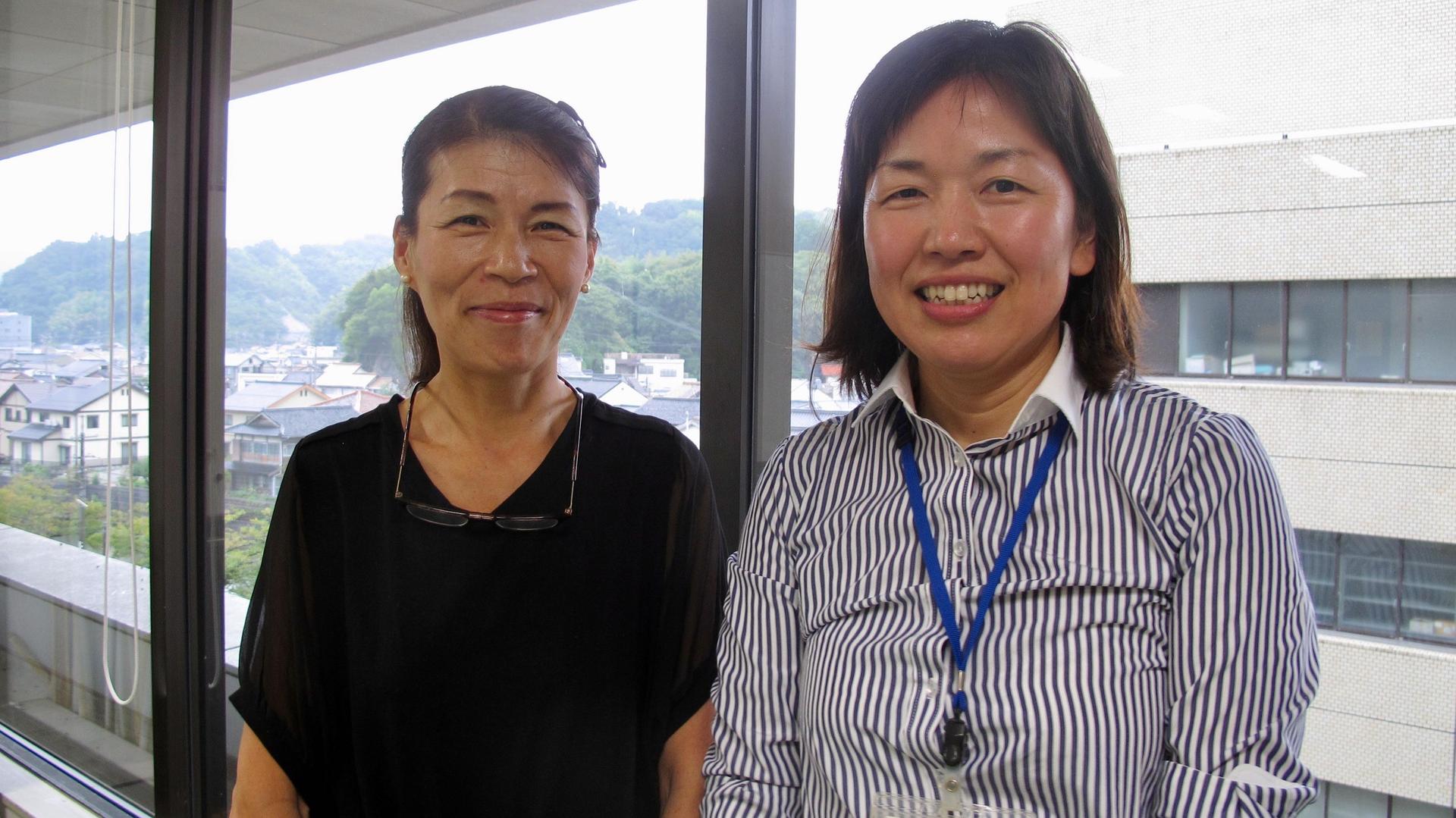Why Japan is paying single mothers to move to the countryside
Tomoko Shinkai (right) is shown with another one of the moms in the program, Mitsue Murakami.
Tomoko Shinkai is on the front lines of Japan’s demographic decline. She works for the small city of Hamada, and it’s her job to get people to move there. It’s hard to imagine a better cheerleader for the place. When you ask her what people should know about her hometown, Shinkai says there are too many wonderful things to name. “Come and see it for yourself!” she laughed.
Shinkai’s business card, which reads, “Residency and Marriage Promotion section,” alludes to the demographic challenges Japan is facing. The government is trying to get people to pair off and have babies — as they are in increasingly short supply. A quarter of Japanese citizens are over 65. Births are below the replacement rate, and a limited immigration policy doesn’t help. The population is projected to shrink by almost a third by 2065.
With Japan’s small towns getting smaller, local governments are looking for creative ways to bring in new people, especially families with children. For example, the small, island town of Ama invested in the local school to try to get people to stick around or move there, and it worked. Kamiyama marketed itself as a relaxed, artsy mecca for technology workers. And Nagicho offers generous subsidies to families with children.
Others, like Hamada, have programs with financial incentives for single parents willing to relocate. (Plus, a group promoting internal migration maintains a website where you can find information about different small towns and rural areas where you might want to move, as well as vacant houses in those areas.)
Shinkai explained the program as a three-part package: “people move here, they work in a caregiving facility and they receive support for single parents.” Whether people stay or go, “what is important is that they form that individual opinion that Hamada is a great place, or they create the memory that Hamada was a very appealing place.”
Related: Slow to start, Japan is finally having a #MeToo moment
Lin Wakao and her daughter moved to Hamada two and a half years ago from Nagoya, one of Japan’s biggest cities. Her daughter is 4 now and goes to a day care center here.
“I’ve always wanted to try living in the countryside, and when I was searching the internet for places to move, I learned about this program,” Wakao said.
Hamada helps place the single mothers in jobs at local nursing homes. (Single dads are welcome too, though so far, only moms have come.) The program pays the women while they train to help seniors with everyday tasks like bathing and meals. It also covers moving costs, part of their rent and a used car to get around. Once the training is complete, there’s a bonus of around $9,000.
Nursing homes are a growth industry here. One freshly painted local facility that works with the city is a symbol of Hamada’s changing demographics. It used to be an elementary school, but now it’s home to around 30 seniors, and more are hoping to get in. Another facility in town has 200 people on the waiting list. Managers say it’s hard to find enough workers, so they’re happy to have the city’s help recruiting single moms.
Shinkai said she loves helping the newcomers feel at home. Since Hamada’s program began in 2015, 13 single mothers have moved there with their kids. Most of them have stayed. Several say they’re grateful for the opportunities the city offers. Being a single mother still carries a stigma in Japan, and working mothers often get stuck in lower-paying jobs.
For Wakao, the issue was child care. She said she couldn’t find a job in Nagoya without having child care — and she couldn’t get child care without having a job. In Hamada, her daughter’s day care center is close to the nursing home where she works. In their free time, they visit the aquarium, the park and the beach.
“Although there are not many children in this kind of rural area, I want her to be able to feel at ease, play and grow,” Wakao said. “When she gets older, if she wants to move to the city, she can.”
For shrinking cities, welcoming parents with young kids makes sense. But it doesn’t tackle the deeper reasons behind Japan’s baby bust. Many people are getting married later, or not at all. Japan’s work culture often requires long days and after-hours socializing with colleagues, which makes it hard to balance a career with family. Women still do most of the child care.
Hamada’s approach isn’t about solving these problems. It’s just trying to bring in new blood, so the city will still be here when the older generation is gone. On that front, Wakao is a success story. After she and her daughter moved to Hamada, she met and married a local man. No, they weren’t set up through the Marriage Promotion department. She said it just happened — and she’s happy to call Hamada home.
